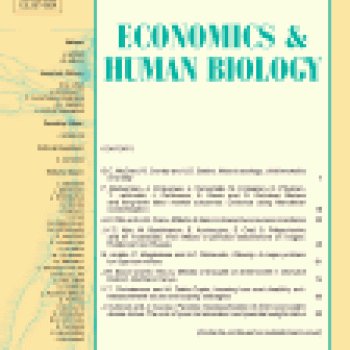Publication Information

The authors utilize longitudinal data on nearly 1800 children in Vietnam to study the predictive power of alternative measures of early childhood undernutrition for outcomes at age eight years: weight-for-age (WAZ8), height-for-age (HAZ8), and education (reading, math and receptive vocabulary). They apply twostage procedures to derive unpredicted weight gain and height growth in the first year of life.
Their estimates show that a standard deviation (SD) increase in birth weight is associated with an increase of 0.14 (standard error [SE]: 0.03) in WAZ8 and 0.12 (SE: 0.02) in HAZ8. These are significantly lower than the corresponding figures for a SD increase in unpredicted weight gain: 0.51 (SE: 0.02) and 0.33 (SE: 0.02). The heterogeneity of the predictive power of early childhood nutrition indicators for mid-childhood outcomes reflects both life-cycle considerations (prenatal versus postnatal) and the choice of anthropometric measure (height versus weight).
Even though all the nutritional indicators that involve postnatal nutritional status are important predictors for all the mid-childhood outcomes, there are some important differences between the indicators on weight and height. The magnitude of associations with the outcomes is one aspect of the heterogeneity. More importantly there is a component of height-for-age z-score (at age 12 months) that adds predictive power for all the mid-childhood outcomes beyond that of birth weight and weight gain in the first year of life.
Highlights
Birth weight, weight gain and height growth predict height and weight at 8 years. Weight gain and height growth also predict educational outcomes at 8 years. The predictive power of the unpredicted weight gain exceeds that of birth weight. Height growth adds predictive power beyond that of birth weight and weight gain. Height growth predicts receptive vocabulary, unlike birth weight and weight gain. KeywordsBirth weight, Weight gain, Height growth, Child anthropometry, Education, Vietnam

The authors utilize longitudinal data on nearly 1800 children in Vietnam to study the predictive power of alternative measures of early childhood undernutrition for outcomes at age eight years: weight-for-age (WAZ8), height-for-age (HAZ8), and education (reading, math and receptive vocabulary). They apply twostage procedures to derive unpredicted weight gain and height growth in the first year of life.
Their estimates show that a standard deviation (SD) increase in birth weight is associated with an increase of 0.14 (standard error [SE]: 0.03) in WAZ8 and 0.12 (SE: 0.02) in HAZ8. These are significantly lower than the corresponding figures for a SD increase in unpredicted weight gain: 0.51 (SE: 0.02) and 0.33 (SE: 0.02). The heterogeneity of the predictive power of early childhood nutrition indicators for mid-childhood outcomes reflects both life-cycle considerations (prenatal versus postnatal) and the choice of anthropometric measure (height versus weight).
Even though all the nutritional indicators that involve postnatal nutritional status are important predictors for all the mid-childhood outcomes, there are some important differences between the indicators on weight and height. The magnitude of associations with the outcomes is one aspect of the heterogeneity. More importantly there is a component of height-for-age z-score (at age 12 months) that adds predictive power for all the mid-childhood outcomes beyond that of birth weight and weight gain in the first year of life.
Highlights
Birth weight, weight gain and height growth predict height and weight at 8 years. Weight gain and height growth also predict educational outcomes at 8 years. The predictive power of the unpredicted weight gain exceeds that of birth weight. Height growth adds predictive power beyond that of birth weight and weight gain. Height growth predicts receptive vocabulary, unlike birth weight and weight gain. KeywordsBirth weight, Weight gain, Height growth, Child anthropometry, Education, Vietnam

